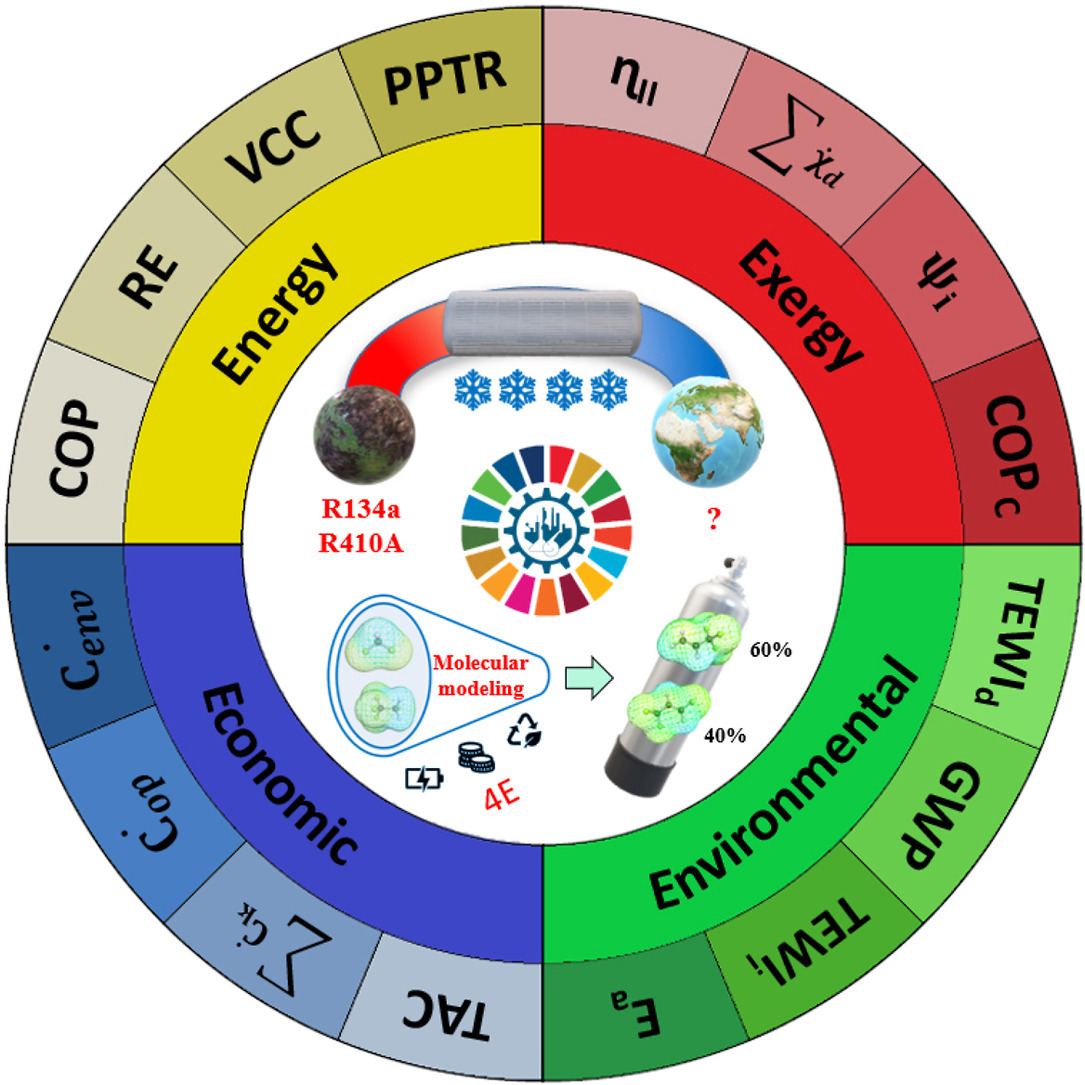
The search for sustainable refrigerants is a delicate balancing act between environmental imperatives and the pragmatics of safety, performance and cost.
A team of researchers from Khalifa University and Universitat Rovira I Virgili, Spain, has developed a novel integrated approach to evaluate new potential refrigerant blends using a machine-learning algorithm. The team’s approach presents a pathway to identify viable, low global warming potential (GWP) refrigerant blends that can meet the stringent demands of the world’s cooling needs.
Prof. Lourdes Vega, Director of the KU Research and Innovation Center on CO2 and Hydrogen (RICH), and Dr. Ismail Alkhatib, postdoctoral fellow at the RICH center, collaborated with Carlos Alba and Dr. Felix Llovell to develop the model, with their results published in Renewable and Sustainable Energy Reviews..
Hydrofluorocarbons (HFCs) are non-ozone depleting refrigerants and were introduced as alternatives to the chlorofluorocarbons that were banned in the 1990s for their harmful environmental impacts. However, HFCs come with their own problems.
The climate impact of a substance is known as its global warming potential (GWP): The lower the GWP, the more climate-friendly the substance is. HFCs have a GWP thousands of times greater than carbon dioxide, making them a significant climate concern despite their low atmospheric concentration. Targeted by rigorous environmental mandates, hydrofluorocarbons are now being phased out and the race is on to find sustainable refrigerants to replace them without compromising efficiency or safety.
Blended refrigerants have emerged as a compelling solution, offering the flexibility to fine-tune properties to meet the required criteria.
By judiciously choosing the constituents and their proportions, researchers aim to replicate the performance of widely used HFCs while aligning with strict environmental regulations. Rather than individually test each option, systematic screening using computational simulations can be an efficient way to determine which refrigerant blends have the best potential.
“Due to global warming and a boost of wealth in tropical regions, the demand for refrigeration and air-conditioning is likely to increase in the coming years,” explained Prof. Vega. “Any new refrigerant must be environmentally friendly, meet safety requirements and offer sufficient technical performance, while being economically affordable.”
Using their model, the team identified 12 potential blends for further technical evaluation. Using their proposed blends could promise a reduction of up to 15 percent in environmental impact, with their GWP up to 1,000 times lower than existing HFCs.
The research team now plans to experimentally test the validity of their proposed blends for selected application and their scale up for widespread use.
Jade Sterling
Science Writer
29 November 2023






